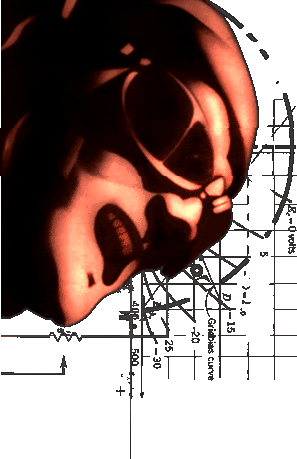 Gordon Mumma è una figura storica della musica elettroacustica negli USA, Fondatore dell’Ann Arbor’s Cooperative Studio for Electronic Music con Robert Ashley, ha lavorato per la Merce Cunningham Dance Company (con John Cage e David Tudor) ed è stato membro della Sonic Arts Union con Ashley, Alvin Lucier e David Behrman.
Gordon Mumma è una figura storica della musica elettroacustica negli USA, Fondatore dell’Ann Arbor’s Cooperative Studio for Electronic Music con Robert Ashley, ha lavorato per la Merce Cunningham Dance Company (con John Cage e David Tudor) ed è stato membro della Sonic Arts Union con Ashley, Alvin Lucier e David Behrman.
Qui vi propongo il monumentale Megaton for William Burroughs del 1963, che meriterebbe di essere visto più che ascoltato, dato che gli esecutori (Robert Ashley, Harold Borkin, Milton Cohen, George Manupelli, Joseph Wehrer, Tony Dey e Gordon Mumma) sono alle prese con varie sculture sonore.
Megaton for Wm. Burroughs is a theatrical live-performance electronic-music composition with ten channels of sound. An ensemble of electro-acoustical sculpture, performed by five players, is heard from four of the channels. Six channels of composed tape are heard from the remaining loudspeakers. The performance takes place in the center of the space, with the audience surrounding the sculpture ensemble. All ten channels are heard from loudspeakers surrounding the audience.
“The thunderous four-minute introduction begins abruptly with a blackout. As the introduction fades, the sculpture gradually becomes visible, illuminated so that the performers are isolated from each other in the space. The performers communicate with each other by means of aircraft headsets. This communication coordinates the performance and is not heard by the audience.
“The live-performance section with the sculpture, which grows out of the fading introduction, occupies nearly half of the piece. The performers, isolated in space but communicating by their headsets, develop an increasingly complex sound montage with the electro-acoustical sculpture. Invisible taut-steel wires above the audience carry speeding, projectile-like flashing objects. The movement of these objects sets the overhead wires into vibrating resonances which, when amplified, become part of the sonic montage.
“As the illumination fades near the end of this live-performance section, a drone emerges and becomes recognizable as that of an aircraft squadron. The isolated images of the performed sculpture evolve through the drone into the sounds of World War II bomber crews communicating with each other from isolated parts of their aircraft during the course of a raid.
“The piece has evolved gradually but directly from its thunderous, abstract beginning through the electro-acoustical montage and into a cinema-real air raid. A brief burst of heroic movie music introduces the closing sequence: in an entirely different part of the space, in an isolated pool of light a lone drummer quietly rides his traps.”

